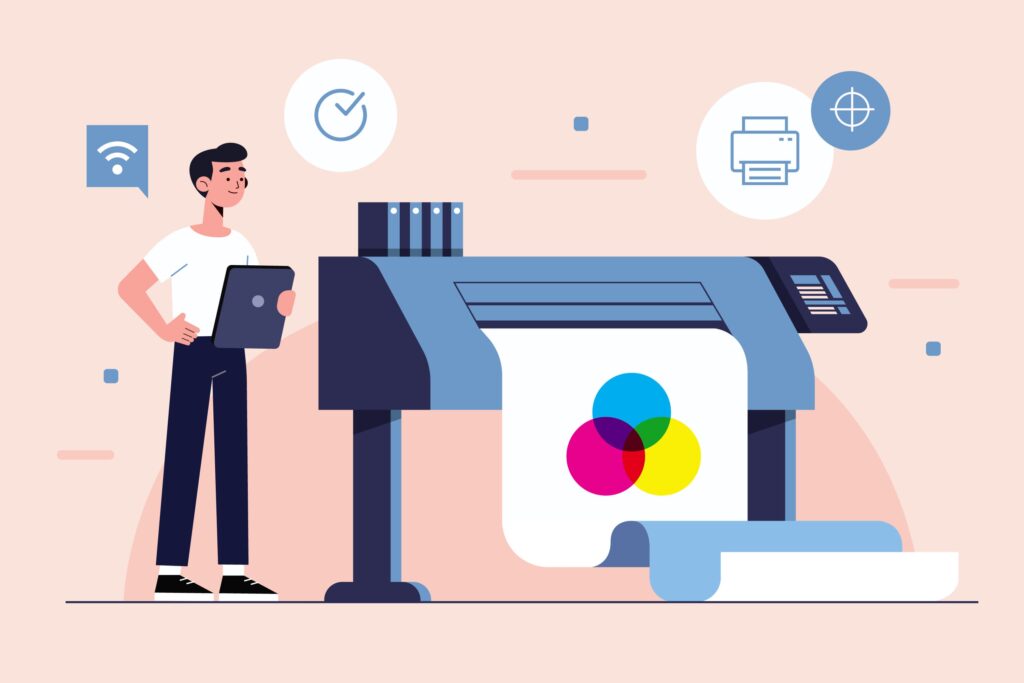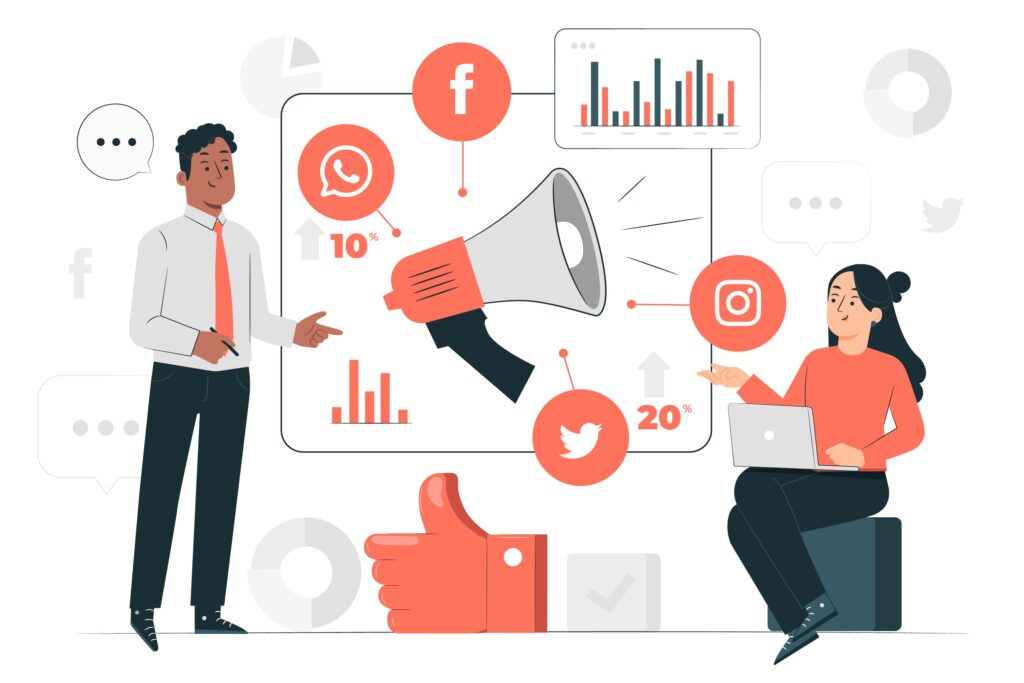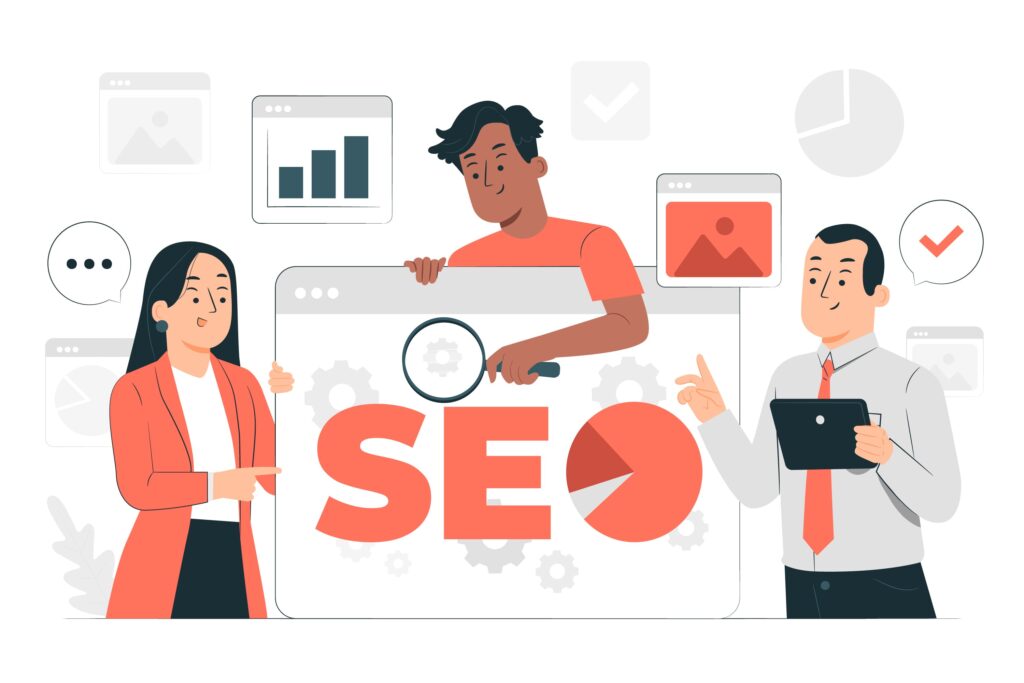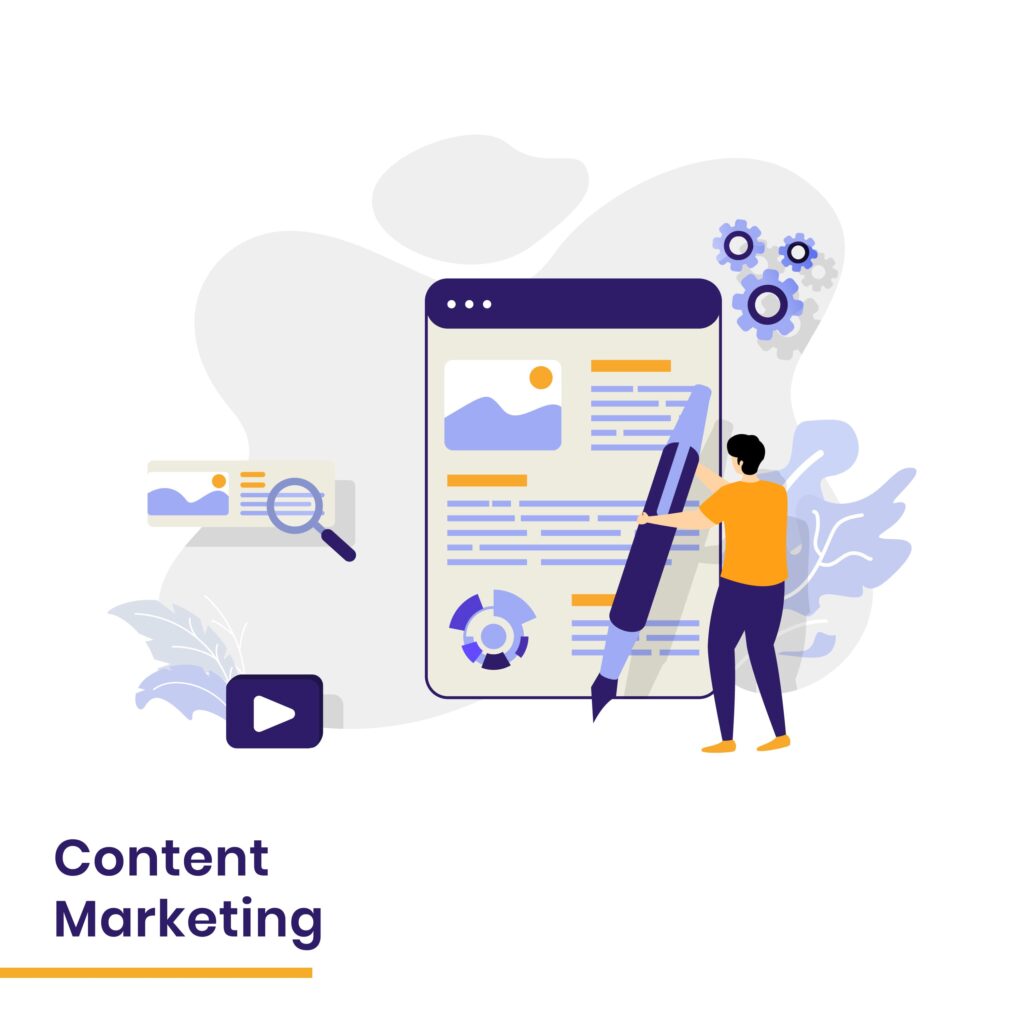Exploring the Differences Between Traditional Marketing and Digital Marketing
Marketing has undergone a significant transformation over the years, evolving from traditional methods to the digital landscape we witness today. Traditionally, businesses relied on conventional marketing approaches, such as print media, television, radio, and direct mail, to reach their target audience. However, with the advent of technology and the rise of the internet, digital marketing has emerged as a powerful alternative, offering new channels and strategies for promoting products and services.
The traditional marketing landscape primarily involves reaching out to consumers through tangible, offline methods. This includes print advertisements in newspapers and magazines, commercials on television and radio, as well as physical promotional materials like brochures and direct mail. On the other hand, digital marketing encompasses a wide array of online platforms and tools, utilizing the internet to connect with consumers.
Importance of Understanding Traditional and Digital Marketing Distinctions
In the contemporary business environment, understanding the distinctions between traditional and digital marketing is crucial for companies seeking effective and efficient ways to promote their offerings. Each approach comes with its own set of strengths and weaknesses, making it essential for marketers to navigate and leverage the right mix for their specific goals.
Digital marketing has gained prominence due to its ability to reach a global audience instantaneously, providing unparalleled opportunities for targeted advertising and data-driven decision-making. On the contrary, traditional marketing methods, while having a longstanding history, may face limitations in terms of reach, measurability, and adaptability to rapidly changing consumer behaviors.
Recognizing the differences between these two marketing realms enables businesses to craft comprehensive strategies that harness the benefits of both traditional and digital channels. Striking the right balance ensures a wider reach, increased brand visibility, and a more nuanced understanding of consumer preferences.
In the subsequent sections, we will delve deeper into the comparison of traditional and digital marketing, exploring various types of marketing within each category and highlighting the distinctive features that shape their effectiveness in the contemporary business landscape.
Table of Contents
Traditional Marketing
Traditional marketing refers to conventional methods of advertising and promoting products or services that have been employed for decades before the digital revolution. This form of marketing relies on offline channels and tangible materials to connect with the target audience. It is characterized by a one-way communication approach, where businesses communicate their message to a broad audience without immediate interactive feedback.
Common Channels of Traditional Marketing
- Print Media (Newspapers, Magazines)
One of the oldest forms of traditional marketing, print media involves placing advertisements in newspapers and magazines. This method allows businesses to reach a local or niche audience and offers a tangible format for conveying information.

- Broadcast Media (TV, Radio)
Television and radio commercials have been a staple of traditional marketing, providing a dynamic platform to showcase products or services to a wide audience. While TV commercials offer visual engagement, radio commercials rely on auditory communication.

- Direct Mail
Sending physical promotional materials directly to a target audience’s mailbox is known as direct mail marketing. This includes flyers, brochures, catalogs, and other printed materials.

- Telemarketing
Telemarketing involves reaching out to potential customers through phone calls. While it allows for direct communication, it often faces challenges in terms of consumer receptivity and the prevalence of “Do Not Call” lists.

Pros and Cons of Traditional Marketing
- Reach and Targeting
Pros: Traditional marketing methods can reach a broad audience, especially through widely circulated newspapers, popular TV programs, or radio shows.
Cons: Targeting specific demographics can be challenging, leading to a lower level of precision in reaching the intended audience compared to digital marketing.
- Cost Considerations
Pros: Some traditional marketing methods, such as local newspaper ads, can be cost-effective for smaller businesses with a local target audience.
Cons: Advertising on major TV networks or prominent magazines can be expensive, limiting access for smaller businesses with tighter budgets.
- Measurability Challenges
Pros: Traditional marketing can yield tangible results, such as an increase in foot traffic or sales during and after a campaign.
Cons: Measuring the exact impact of a traditional marketing campaign can be challenging, making it harder to determine the return on investment (ROI) compared to the precise analytics available in digital marketing.
Digital Marketing
Digital marketing is the modern, online-centric approach to promoting products and services using various digital channels. Unlike traditional marketing, digital marketing leverages the power of the internet and electronic devices to engage with the target audience. It is characterized by a two-way communication model, where businesses can interact with consumers in real-time and tailor their marketing efforts based on data-driven insights.
Key Channels of Digital Marketing
- Social Media Marketing
Social media platforms like Facebook, Instagram, Twitter, and LinkedIn are powerful tools for reaching a vast audience. Digital marketers use these platforms to create engaging content, run targeted ads, and build brand awareness.

- Search Engine Optimization (SEO)
SEO involves optimizing online content to improve its visibility on search engines. By using relevant keywords and creating high-quality content, businesses aim to rank higher in search engine results, increasing the likelihood of attracting organic traffic.

- Content Marketing
Content marketing revolves around creating and distributing valuable, relevant content to attract and engage a target audience. This includes blog posts, articles, videos, infographics, and more.

- Email Marketing
Email marketing involves sending targeted messages to a group of people through email. This channel is effective for building relationships with existing customers, nurturing leads, and promoting products or services.

Pros and Cons of Digital Marketing
- Targeted Reach and Audience Segmentation
Pros: Digital marketing allows for precise targeting based on demographics, interests, and online behavior, ensuring that the message reaches a highly relevant audience.
Cons: Adapting to rapidly changing algorithms and staying abreast of evolving digital landscapes can be challenging, affecting the effectiveness of targeted campaigns.
- Cost-Effectiveness and Scalability
Pros: Digital marketing often offers cost-effective alternatives, especially for small businesses. Social media advertising, for instance, allows for flexible budgets, and digital campaigns can be scaled up or down based on performance.
Cons: Despite the potential cost-effectiveness, some digital marketing channels may require ongoing investments for optimal results, and competition for ad space can drive up costs.
- Real-Time Analytics and Measurability
Pros: Digital marketing provides real-time analytics and measurable insights. Marketers can track user engagement, website traffic, conversion rates, and other metrics, allowing for data-driven decision-making.
Cons: The abundance of data can be overwhelming, and interpreting analytics requires expertise. Additionally, privacy concerns and evolving regulations may impact data collection and analysis.
Key Differences Between Traditional Marketing and Digital Marketing
Understanding the key differences between traditional marketing and digital marketing is pivotal for businesses in crafting a marketing strategy that effectively combines the strengths of both traditional and digital approaches. The integration of these strategies ensures a comprehensive and adaptable marketing plan suited to the complexities of the modern consumer landscape.
Reach and Targeting Capabilities
- Local vs. Global Reach
Traditional Marketing: Primarily focused on local or regional audiences, traditional marketing channels like newspapers and local TV stations are effective for businesses targeting specific geographic areas.
Digital Marketing: Offers unparalleled global reach. Through online platforms, businesses can reach audiences worldwide, breaking down geographical barriers and expanding their market presence.
- Audience Segmentation
Traditional Marketing: Segmentation in traditional methods is often broader, relying on general demographics. The ability to target specific consumer segments is limited, resulting in less precise audience engagement.
Digital Marketing: Provides sophisticated tools for audience segmentation based on various criteria such as age, interests, online behavior, and location. This precision enables marketers to tailor content to specific segments for higher relevance.
Cost Considerations
- Budget Allocation
Traditional Marketing: Allocations are often fixed, and budget distribution across channels may be less flexible. Costs can be higher for advertising on popular TV channels or in widely circulated magazines.
Digital Marketing: Offers more flexibility in budget allocation. Digital channels often allow businesses to start with smaller budgets and scale up based on performance. This flexibility is particularly advantageous for smaller businesses with limited resources.
- Return on Investment (ROI)
Traditional Marketing: Measuring the exact ROI can be challenging due to the lack of real-time analytics. Businesses may find it difficult to attribute specific results directly to traditional marketing efforts.
Digital Marketing: Provides robust analytics and tracking tools, allowing businesses to measure the impact of their campaigns in real time. Clear insights into user behavior, conversion rates, and other key metrics make it easier to assess ROI and adjust strategies accordingly.
Measurability and Analytics
- Traditional Challenges
Traditional Marketing: Measuring the effectiveness of traditional campaigns is often retrospective and relies on indirect indicators such as increased foot traffic or phone inquiries. Gathering accurate data on audience engagement is challenging.
Digital Advantages: Digital marketing excels in measurability. Marketers can track user interactions, website visits, click-through rates, and conversion rates in real time. This immediate feedback allows for quick adjustments and optimization of ongoing campaigns.
- Digital Advantages
Traditional Marketing: Limited to general market trends and broad audience feedback, making it challenging to attribute specific results directly to marketing efforts.
Digital Marketing: Empowers marketers with detailed insights, enabling them to understand user behavior, preferences, and the effectiveness of each element within a campaign. This data-driven approach enhances decision-making and contributes to ongoing optimization strategies.
Future Trends
The landscape of digital marketing is ever-evolving, driven by rapid technological advancements. Several emerging technologies are shaping the future of digital marketing, including:
- Artificial Intelligence (AI):AI is revolutionizing digital marketing by enabling personalized customer experiences, predictive analytics, and chatbots that enhance user engagement.
- Augmented Reality (AR) and Virtual Reality (VR): These immersive technologies are providing new avenues for interactive and engaging digital marketing campaigns, especially in sectors like retail, travel, and real estate.
- Voice Search Optimization: With the increasing popularity of voice-activated devices, optimizing content for voice search is becoming crucial for digital marketers, requiring a shift in SEO strategies.
Traditional marketing strategies are also undergoing evolution as businesses seek to integrate them with digital approaches. The convergence of traditional and digital marketing is evident in:
- Integrated Marketing Campaigns: Businesses are adopting a holistic approach, combining the strengths of both traditional and digital channels to create cohesive, cross-platform campaigns for maximum impact.
- Incorporating Digital Elements: Traditional marketing methods, such as print ads and direct mail, are incorporating QR codes, augmented reality features, and digital calls-to-action to bridge the gap between offline and online experiences.
Data-driven marketing is at the forefront of digital strategies, and the future will witness an even greater emphasis on:
- Advanced Analytics: Businesses will leverage advanced analytics tools to gain deeper insights into customer behavior, allowing for more precise targeting and personalized content delivery.
- Privacy and Ethical Considerations: As data collection continues to be a crucial aspect of digital marketing, there will be a heightened focus on ethical practices and compliance with privacy regulations to build and maintain consumer trust.
Importance of Adapting to the Changing Marketing Landscape
In summarizing the key differences between traditional and digital marketing, it is essential to recognize that each approach has its strengths and weaknesses. Traditional marketing offers broad reach and tangible experiences, while digital marketing provides precise targeting, real-time analytics, and global reach.
The rapidly evolving marketing landscape demands adaptability. Businesses that understand the dynamics of both traditional and digital marketing and can navigate seamlessly between them are better positioned to stay relevant and effective in reaching their target audience.
The future of marketing lies in embracing a balanced and integrated approach. Businesses should strive to leverage the strengths of both traditional and digital marketing, creating a synergistic strategy that maximizes their impact. This involves understanding the unique advantages of each approach, staying informed about emerging trends, and being agile in response to the ever-changing consumer and technological landscape. By doing so, businesses can build a resilient and effective marketing strategy that stands the test of time
